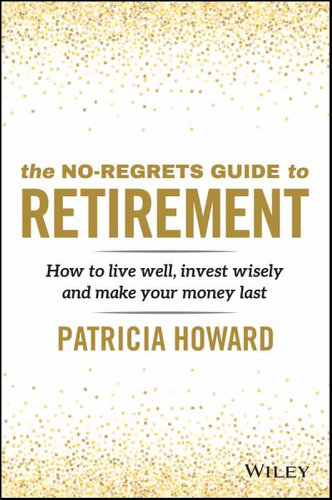Book Review – The No-Regrets Guide to Retirement by Patricia Howard

Patricia Howard is an author, finance journalist and financial planner. She has written for The Australian, The Australian Financial Review and The Age. Patricia started her own financial planning practice fifteen years ago, which specialises in providing retirement advice, and she holds her own Australian Financial Services License.
Given her history in the industry, it shows that she really has a wealth of knowledge regarding financial planning and planning for retirement in general. She has a lot of experience, and has a lot of firsthand (or maybe it is second hand if it is with her clients) experience of what can go wrong for people in retirement. The information provided in this book is helpful for anyone who is approaching retirement, or who is in retirement to avoid the common (or even rare) mistakes that people might make.
The main focus of the book is to really drill in the importance of the money we have at retirement, because once we reach retirement it when it becomes the most important to us. Given our earning potential is significantly diminished once we reach retirement, any financial mishap can have significant ramifications and prevent us from a long and successful retirement (at least from a financial perspective).
The book appears to mainly target people who are close to reaching preservation age, or who may have just reached it. I definitely got the impression that the target audience for this book was around 50 years old to 65 years old. So, although being a fair bit younger than what appeared to be the target demographic, I was still able to garner a lot of useful information out of this book.
One of the more interesting perspectives I noticed in this book was to think of retirement be broken up into different sections. Even though this book is targeted for people who are aiming to retire at around 60 years old. It still talks about how between ages 60 and 70 you could still be relatively fit and able to get around, so your lifestyle will be significantly different for these years compared to when you are over 70. Obviously, the ages are only guides and it will vary person to person.
This perspective can have a lot of impact for people within the FIRE community, where instead of the first stage of retirement being 10 years, it may be 30 or more years instead (between ages 40-70), before you need to transition to “old” person retirement. Further from this, you could also break your “young” retirement into different stages depending on what you want in life. The important point is that you need to be able to think about the financial impact of the different stages in your life.
Overall, I really enjoyed the book because it was good to have reassurance that retirement can be such a great time of anyone’s life. It seems to be such a common thought that retirement is just one step closer to the end of life, whereas in reality it can really be the best time of someone’s life where you can really enjoy the fruits of your labour from working all those years. I believe a lot of people outside of the FIRE community (and even some people within it) really underate how great retirement can be. I am definitely looking forward to retirement and it was great to have a book written just backing up my own thoughts on how enjoyable the retired life can be.
I would recommend anyone to read this book, there is nothing groundbreaking in it. All the information is common sense and will be current for a long time (apart from maybe the specifics around superannuation rates and contributions etc). But as I have said a lot of the time, I am a firm believer that there is really nothing too complicated that needs to be done to achieve financial success, and this book just reinforces those points. Given this book talks a lot about accessing superannuation, I will try to read it again when I am reading that stage of my life, or at least maybe an updated equivalent at the time.